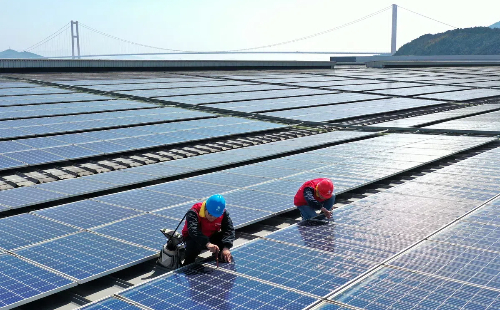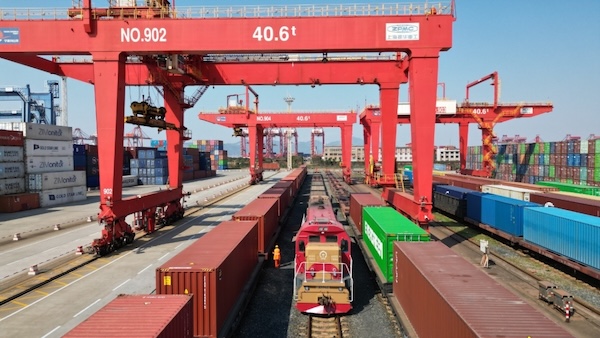China's solar power to lead global green energy production

Technicians check solar panels in Zhoushan, Zhejiang province. [Photo by YAO FENG/FOR CHINA DAILY]
A report by the International Energy Agency, or IEA, on the future of renewable energy production has pinpointed China, and in particular its solar power capabilities, as leading the way for the world in the years to come.
During the next six years, the report said, renewable energy programs will be rolled out at three times the speed of the past six years, with China and India in the vanguard, and in the same period, around 60 percent of all renewable energy capacity installed worldwide is expected to be of Chinese origin.
"If I could sum this (trend) up in two words they would be: China, solar," said IEA Executive Director Fatih Birol.
The growth in solar energy capability is expected to be enabled by falling production costs and also a change in policy that will see homes and businesses encouraged to install solar panels for cheaper energy.
China currently dominates the world when it comes to manufacturing solar power-generating hardware, which Birol said had seen prices more than halve since the start of 2023.
He said the expansion of production needed to be managed effectively.
"Solar (conversion cell) manufacturing capacity is forecast to triple in both India and the US by 2030, helping global diversification," he said.
However, producing solar panels in the US costs three times as much as in China, and in India, it is twice as expensive.
According to the report, policymakers should consider how to strike a balance between the additional costs and benefits of local manufacturing, weighing key priorities such as job creation and energy security.
The prospects for wind power are also improving after a period of investment in the sector being hamstrung by high interest rates.
The report said that between 2024 and 2030, the rate of wind power growth worldwide will double compared to the previous six years.
"Renewables are moving faster than national governments can set targets for," said Birol. "This is mainly driven not just by efforts to lower emissions or boost energy security — it's increasingly because renewables today offer the cheapest option to add new power plants in almost all countries around the world."
The potential role that renewables could play in the future, he went on to explain, was on a transformational scale.
"Between now and 2030, the world is on course to add more than 5,500 gigawatts of renewable power capacity — roughly equal to the current power capacity of China, the European Union, India and the United States combined," he added. "By 2030, we expect renewables to be meeting half of global electricity demand."

 Ningbo seabird project seeks international volunteers
Ningbo seabird project seeks international volunteers  Jakub's journey: From shipyard to sea
Jakub's journey: From shipyard to sea  Badminton Asia COO applauds Ningbo
Badminton Asia COO applauds Ningbo 


